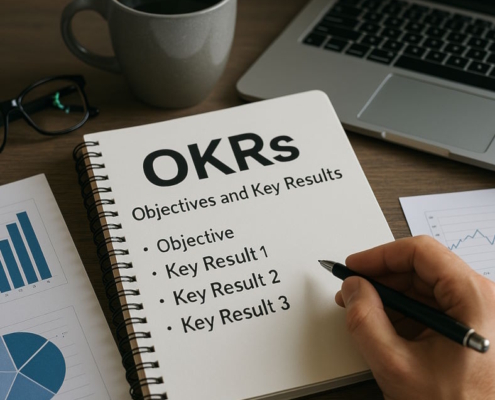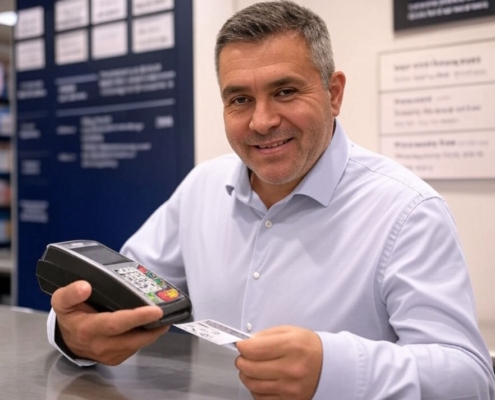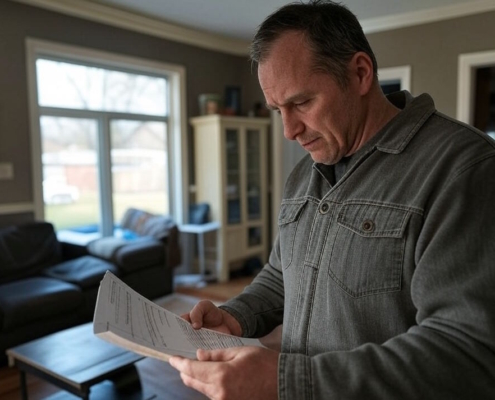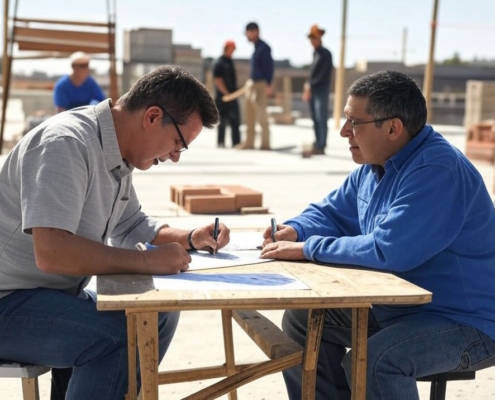Introduction
A family that experiences constant and frequent conflict, misbehavior, and regular child abuse or neglect due to specific parent behavior is considered dysfunctional. Youngsters raised in these kinds of households could believe that this is normal. In addition to substance abuse, various kinds of addiction, and occasionally untreated mental disorders, a dysfunctional family is largely caused by two people, one of whom is usually blatantly hostile and the other is typically dependent. Parents who have an upbringing in a dysfunctional family often overcorrect or try to be like the parents they grew up with. When a dominating parent mistreats or neglects their kids, the less dominant parent may choose to ignore it and encourage youngsters to believe that they are at fault.
Examples
Because of what they went through growing up in a family, members of a dysfunctional family share traits and behavioral patterns. This usually serves to either enable or maintain the problematic behavior. A multitude of circumstances might impact the family system.
Common traits:
Almost universal
The majority of dysfunctional households have certain characteristics:
- Insufficient compassion, comprehension, and sensitivity for specific family members, but demonstrating profound compassion or compliance towards certain members who are thought to have “special needs” in real life. To put it another way, one family member consistently gets considerably more than what they deserve, whereas another is neglected.
- Denial (sometimes referred to by the term “elephant in the room”): the unwillingness to admit abusive behavior, perhaps thinking that the circumstances are normal or perhaps advantageous.
- Poor or absent self-discipline (e.g., accepting improper behavior from others, not communicating what constitutes appropriate and unacceptable behavior, or enduring verbal, physical, or emotional abuse).
- Disrespect for others’ limits (e.g., making important pledges without good reason, purposely crossing someone else’s stated boundary, or engaging in bodily contact that the other individual finds objectionable).
- Extremes in confrontation (either an excessive amount of fighting or not enough amicable arguments among family members).
- Unfair or unequal treatment of a few family members on the basis of their caste, race, gender identity, age, sexual orientation, birth order, abilities, or family position (mother, etc.) (may include appeasing one member frequently at the cost of others or enforcing rules inconsistently or unevenly).
Not universal
While not specific to every dysfunctional family, nor is it universal among them, the characteristics listed below are common in dysfunctional families:
- Unusually high degrees of envy or other dominating behaviors.
- Influence of marital status on conflict:
1) Between parents who are divorced or separated, typically as a result of their split.
2) Parents who stay married and sometimes for the “sake” of their children, but whose divorce or separation would actually have a negative impact on the children (separation should be considered carefully because it can be harmful to the children).
3) Parents who would like a divorce but are unable to do so for legal, cultural (which includes religious), or financial reasons.
- Children who are terrified of their parents in general or who are reluctant to discuss what is going on within the home with others.
- Abnormal sexual conduct including incest, promiscuity, and adultery.
- Absence of family time, particularly in terms of social and recreational activities (“No family activity ever happens here.”).
- Even in situations where it isn’t the case, parents claim that they nurture their kids fairly.
- Family members (with or without children) who reject one another or decline to be recognized together publicly
- Further in life, there is a greater likelihood that kids of parents with substance abuse or who drink excessively may also develop similar issues.
Particular instances
Families may grow dysfunctional at certain times for reasons related to particular situational circumstances. Among these include youngsters going through a rebellious phase, pressure in relationships between extended and nuclear family members, and fundamental differences in systems of belief.
Laundry List
There is something called a “Laundry List” in the show “Adult Children of Alcoholics”. The program Adult Children of Alcoholics uses The Laundry List as its primary text. There are fourteen distinct statements on this list that deal with being a grown-up kid of an alcoholic parent. These quotes offer insights into the ways in which growing up with alcoholic parents has traumatized kids. “Confusion of pity and love,” “possessing low self-worth,” and “losing identity” are a few of the comments’ standout points. To assist families realize they aren’t lonely in their challenges, the laundry list of issues is a useful instrument in therapy sessions. Female offspring of alcoholic parents are more likely to experience depression. A substantially increased risk of substance use disorders in male offspring of alcoholics exists.
Parenting
Unhealthy indicators
Unhealthy parenting behaviors that may indicate a dysfunctional family include:
- Unreasonable demands
- Ridicule
- Love on condition
- Disrespect, particularly indifference.
- Family members are prohibited from expressing the “wrong” emotions due to emotional intolerance.
- Social isolation or dysfunction, such as when parents refuse to support their “friendless” kid or avoid interacting with other families, particularly those that have kids of similar gender and age.
- Speech that is suppressed (children aren’t allowed to question authority or dissent)
- Refusal to acknowledge “inner life” (the refusal to let kids form their own moral philosophies)
- Excessive or insufficient protection
- Indifference (“I do not care!”).
- Dismissing (“You’re incapable of doing anything well!”).
- Dishonor (“Disgrace on you!”).
- Bitter tone (speaking in an acrimonious tone of voice no matter what is stated)
- Hypocrisy “Do what I say, rather than what I do.”
- Unwillingness to pardon little transgressions or mishaps
- Criticism or stigmatization (“You are an awful liar!”)
- Being unduly critical and failing to offer appropriate appreciation. (Experts suggest the best feedback is between 80–90% appreciation and 10–20% helpful criticism.)
- Double standards. Using “mixed messages” or having two different sets of values—one for the public and another for private—or imparting different values to different children are examples of applying double standards.
- The parent who isn’t there much for the kid because of job overload, drug addiction, gambling, or other issues
- Children are impacted by unfinished tasks, unfulfilled activities, and broken promises (“We’re going to do it afterward.”)
- Transferring to a child what is legally theirs
- Bias based on gender: when a particular gender of kids is treated kindly the other is not.
- Talking about and being exposed to sexuality too soon, too much, too late, or too little
- Ineffective punishment that is more motivated by feelings or family dynamics than by set guidelines, such as “surprise” punishment
- Experiencing unstable emotions as a result of drug misuse, stress, or personality disorders
- When people report misbehavior on the part of their children, or when teachers indicate issues at school, parents tend to invariably (or never) side with their kids.
- Scapegoating (willfully or ignorantly holding one child accountable for the transgressions of another)
- “Tunnel vision” assessment of pediatric issues. When a child lags behind in class despite having missed recent days due to sickness, for instance, a parent can assume that their kid is sluggish or has comprehension issues.
- Depending on how old and mature their siblings are, older siblings can have either too little or too much power over their younger brothers and sisters.
- Frequent denial of permission (“blessing”) for things that a kid wants to participate in that are acceptable for their age, legal, and part of their culture.
- The “know-it-all” (doesn’t need to hear the kid’s version of what happened when making accusations, or pay attention to what the youngster has to say about issues that directly affect them.)
- Pushing kids on a regular basis to participate in endeavors in which they are grossly under or over-qualified (e.g. taking a small kid to a poker game, having a preschooler babysit a usual 9-year-old kid, etc.)
- Total miserliness (“scrooge”) or a selective denial of children’s necessities (father refuses to buy son a bicycle because he wishes to save funds for pension or “something crucial”).
- Disputes over nature versus nurture (parents, who are frequently non-biological, attribute common issues to a child’s genetic makeup, but poor parenting practices could be the true culprit.)
Dysfunctional family styles
“Kids as pawns”
Manipulating a child to accomplish anything that is contrary to the interests or rights of the other parent is a typical example of parenting in a dysfunctional family. Verbal manipulation techniques include spreading rumors concerning the other parent, talking to the parent via the kid (and thus putting the kid in danger of the other parent’s disapproval of that interaction), attempting to gather data via the kid (spying), and making the kid detest the other parent while showing little or no consideration for the negative consequences of the parent’s behavior on the kid. Although this kind of manipulation is frequently seen in joint custody cases resulting from divorce or separation, it may additionally occur in families that are intact, when it is referred to as triangulation.
A list of further dysfunctional family styles
- “Utilizing” (parents with toxic narcissism who govern by conditional love and intimidation.)
- Abuse (parents harming their children physically, emotionally, or sexually.)
- Perfectionist (someone who is obsessed with perfection, status, power, or order, and who will stop their kid from failing in anything.)
- Dogmatic or fanatical (tough, unyielding rules, no room for children to challenge authority, rebel, or form their own moral compass within reason.)
- Unequal parenting (going above and beyond for one kid while persistently neglecting the basic requirements of another.)
- Deprivation (neglect or control by denying their children affection, support, basic needs, compassion, acknowledgment, encouragement, oversight, or by taking other actions that jeopardize their safety.)
- Abuse between siblings (parents not stepping in to stop a sibling from abusing another sibling sexually or physically.)
- Abandonment (when a parent consciously ends contact with their kids, saying they don’t want to see them again and, in certain situations, abandoning them to be orphans in the absence of other, long-term parental arrangements.)
- Appeasement (In an effort to keep the peace and prevent tantrums, some parents encourage bad conduct—even according to their own criteria—while invariably punishing another child for excellent behavior.)
- Loyalty manipulation (giving undeserved gifts and lavish care in an attempt to make a preferred, although misbehaving child the most obedient and well-mannered child while tacitly disregarding the needs and wants of their most obedient child.)
- Helicopter parenting (it refers to the practice of parents micromanaging their kids’ lives or their siblings’ relationships, particularly when there are small disputes.)
- “The Deceivers” (reputable parents in the neighborhood who neglect or abuse one or more of their children and are probably active in nonprofit or philanthropic organizations.)
- “Public image controller” (as mentioned above, kids are occasionally cautioned not to inform anybody about arguments, abuse, or other negative events that occur in the home for fear of harsh consequences.)
- Paranoid (a parent experiencing persistent and unreasonable worry followed by wrath and false charges that their kid is doing nothing good or other people are scheming harm.)
- “No friends permitted” (parenting style when parents forbid, discourage, or intervene in their child’s friendships with children of the same sex or age.)
- Role reversal (parents who assume their small children will look after them instead of the other way around.)
- “It’s not your concern” (children are frequently instructed that they shouldn’t worry about a certain sibling or sister who is constantly making trouble.)
- Extreme egalitarianism (A significantly younger kid is allowed to do anything that a grown-up can do, or an elder child has to wait years for the younger kid to reach a mature enough age.)
- “The guard dog” is the parent who willfully assaults family members who they believe are upsetting their cherished partner, spouse, or child in the smallest.
- “My baby always” is the term used to describe the parent who won’t let any of their small children become mature and start taking charge of themselves.
- Cheerleader (when two parents abuse their child at the same time, one of them encourages the opposing parent.)
- “Along for the ride” refers to a hesitant de facto, foster, adoptive, or step-parent who has to live with their non-biological kid because their spouse or partner needs them to, but who has no genuine concern about the kid.
- Politician (parent who consistently promises their children something, or grants them permission to do something, but has no or little intention of following through.)
- “It’s taboo” (Any inquiries kids may have regarding nudity, specific private body parts, puberty, romance, pregnancy, or sexuality are met with resistance from parents.)
- Identified patient (The entire family’s dysfunction is concealed, but one child—typically the mother’s choice—is made to attend therapy consistently.)
- Münchausen syndrome via proxy (in this more severe scenario, a parent purposefully makes their child ill in order to get medical care from other doctors.)
Dynamical
Coalitions are seen as a symptom of dysfunctional families because they are subsystems inside families with stricter boundaries.
- The outcast family member, who could be a child or parent living apart from the rest of the family.
- Parent versus parent (regular arguments between adults—married, divorced, or separated—that take place outside the presence of the kids.)
- Polarized family (Any number of kids and a parent on opposing sides of the dispute.)
- Parents vs. children (generation disparity, intergenerational disputes, or dysfunction brought on by culture shock.)
- Balkanized family (called after a triangular conflict with alternating coalitions in the Balkans.)
- Free-for-all (a “free-for-all” fighting family, but when options are limited, it can lead to polarization.)
Children
An “intact” family is frequently not documented as a dysfunctional family, in contrast to divorce and, to some degree, separation. Therefore, it’s possible that the teachers, family, and friends of these kids are totally ignorant of the circumstances. Furthermore, a youngster experiencing parental separation may face additional stress and undeserved guilt for the breakdown within the home.
The six fundamental roles
It has been observed that children raised in a dysfunctional family may take on or be given any or all of the six fundamental roles.
- The Golden Child, sometimes referred to as the Super Kid or Hero, is a kid who, in order to escape the environment of a dysfunctional family, defines themselves separately of their position in the dysfunctional family, gain favor with parents, or protect themselves from condemnation by family members, turns into an excellent student or overachiever beyond the family (such as in academia or athletics).
- The child known as the “problem child,” “truth teller”, or “rebel” is the one who either a) starts most of the issues pertaining to the dysfunction in the family or b) creates a narrative in reaction to the dysfunction already present, the latter usually in an effort to divert attention away from someone else who has a pattern of similarly bad behavior.
- The “problem child” position can also refer to the Scapegoat, who is unfairly labeled as such by other members of the family or even mistakenly held responsible for their own personal or group dysfunction, frequently in spite of the fact that they are the sole emotionally sound person in the group.
- Inside the family, the Caretaker is the equivalent of the “Super Kid” or Good Child” taking charge of the mental wellness of the group and frequently taking on the role of parent.
- The calm, reserved, and unassuming child whose requirements are typically disregarded or concealed is known as the “Passive Kid” or “Lost Child.”
- Comedy is used by The Mascot, also known as the Family Clown, to draw attention away from the gradually broken family structure.
- The Mastermind is an opportunist who takes advantage of the shortcomings of other members of the family to obtain what they desire; most of the time, adults are trying to placate them.
Impacts on kids
Youngsters raised in a dysfunctional family may display behavior out of character for their developmental stage because of psychological anguish, either at that point in time or when they become older. It’s also possible for kids from a dysfunctional family to act more immaturely than their classmates do. In contrast, other kids could seem to “grow very fast” emotionally or exhibit a mixed behavior (e.g., courteous, but incapable of taking care of themselves). Because dysfunctional family parenting has been passed down through generations, children from dysfunctional households are also more likely to exhibit acquired unhealthy attachments.
Anxiety and sadness are only two of the many mental health conditions that can arise from an unbalanced childhood. Unfortunately, these young people are more likely to participate in more serious self-harming behaviors and problematic behavior when they grow up in a dysfunctional family context. The young people in this unstable environment may also be far more likely to acquire an alcohol or drug addiction, particularly if their parents or other close friends have previous histories of substance abuse. According to a number of studies, parental substance use can be responsible for from fifty percent to two-thirds of potential cases of chemical addiction, and deviant relationships with peers are frequently linked to substance use. Furthermore, there is a higher chance that the young person would acquire behavioral addictions such as obsessive spending, gambling, or addictions to pornography.
Anorexia nervosa and binge eating syndrome are two eating disorders that are more likely to develop in children raised in a dysfunctional family as a means of coping with psychological pain.
Because of social anxiety, potential personality problems, or disorders related to post-traumatic stress, these young people could also struggle to establish and sustain positive relationships in their social circle. A youngster may also exhibit oppositional defiant traits by defying adults who are not family members and their parents, or by defending their family’s morals in the face of social pressure. Children raised in chaotic circumstances may also lack self-control in social situations or exhibit delaying behaviors that could compromise their academic or professional commitments.
Children who engage in pursuits that deprive them of face-to-face social interaction for a prolonged period of time may also exhibit social deficiencies. Additionally, a disturbed childhood may encourage youngsters to exhibit aggressive behaviors toward their classmates by harassing or bullying others or themselves becoming the target of bullying. Each of these positions frequently enhances the likelihood that the kid would experience low self-esteem concerns, a higher frequency of isolation, and difficulty expressing emotions—all common outcomes associated with physical and emotional abuse. Learn how to protect children from sexual abuse with informed strategies and vigilance.
Young people may look for alternative peer alliances, such as those that participate in juvenile crime, commit actions that are explicitly and deliberately illegal, or exhibit symptoms of ODD (oppositional defiant disorder) if they lack parental arrangement and supportive peer influences. The problematic youngster may also turn to a lifestyle of criminality or involvement in gang activities as a result of their habitual behavior and external circumstances.
In situations where sexual assault was common, it is especially noteworthy to see this defiance of social norms and structure. Early sexual encounters can result in inappropriate behavior that could later spark a curiosity for pedophilia, or they can lead to legal issues that could turn the person into a sexual predator. A study conducted in 1999 found that kids who had abusive sexual encounters “were more inclined to have fled, be addicts, have members of the family with an addiction to drugs or alcohol, and be survivors of the violent family when compared to those without” (1999, Kellogg et al). Furthermore, even in situations where the kid grew up in a household with an average or above-average income, the young person may have a higher chance of becoming impoverished or homeless.
Offspring of a dysfunctional family may exhibit additional socialization issues, such as persistent or abrupt difficulties in their academic achievement. The child may have a serious lack of organizational abilities in their daily lives, making this idea more evident. Additionally, these people are more likely to struggle to establish positive personal relationships, which frequently involves mistrusting others or even exhibiting paranoid behaviors that may be signs of schizophrenia and psychosis brought on by childhood trauma. Additionally, there’s a greater chance that the young person may end up in unstable, sympathetic relationships later in life, and they’re also more likely to participate in riskier activities like having many partners for sex, getting pregnant, or having illicit kids.
It’s possible for dysfunctional behaviors to continue in subsequent relationships. A person who grew up in a dysfunctional family may also impart these learned behaviors to their children, such as their drug use patterns, techniques for resolving conflicts, and social boundaries. Due to these social deficiencies, people may exhibit self-protective behaviors as a way to make up for the differences in their upbringing. This is because they may find it difficult to engage in healthy self-care and useful emotional coping mechanisms.






























